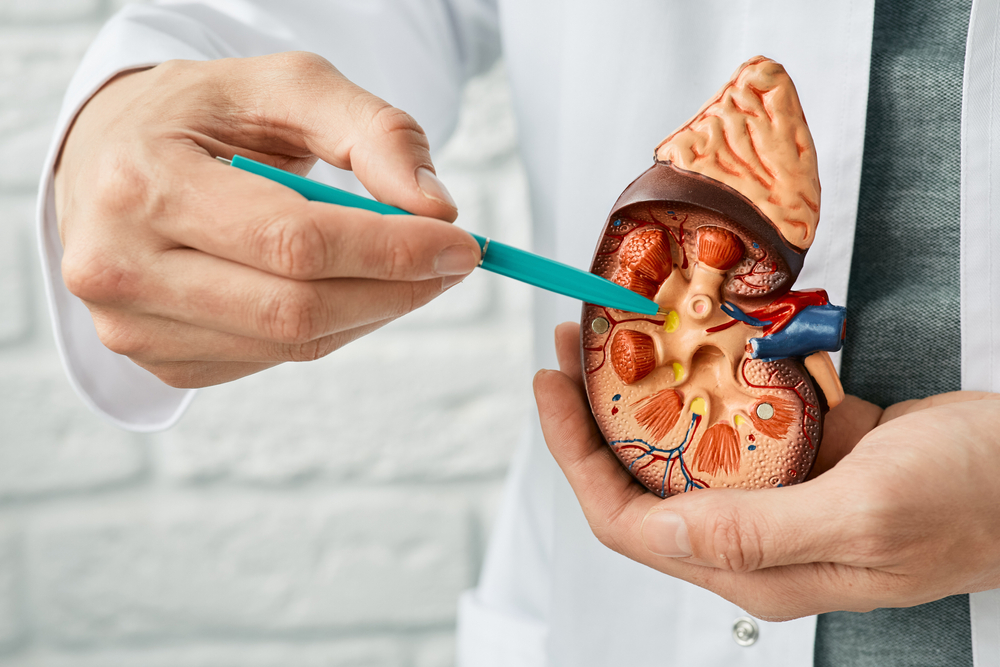Understanding Kidney Cancer: Causes, Symptoms, and Treatment Options

What is Kidney Cancer?
Kidney cancer includes tumors arising from its tissue and as well its inner urine-collecting lining called the renal pelvis. About 80% of the tumors arising from the kidney are malignant (i.e. cancerous) and about 20% may be benign (i.e. non-cancerous). Removing such tumor masses with or without the removal of the complete kidney and analyzing them under the microscope in the lab is the surest way of confirming their exact nature.
What are the Common Signs and Symptoms of Kidney Cancer?
Most of kidney cancers today are detected incidentally on ultrasound or CT scan done for other purposes. In advanced or metastatic cases it may be associated with signs and symptoms as follow:
- Anemia
- Appetite loss
- Blood in the urine
- Enlarged veins (varicocele) near a testicle
- Fatigue
- High blood pressure
- Lump on the side or back
- Pain in the side or back
- Swelling of the ankles and legs
- Unexplained weight loss
How is Kidney Cancer Diagnosed?
After documentation of a mass in the kidney on initial investigation such as ultrasound, the doctor may advise you to undergo further tests.
Contrast CT Scan: It is an essential investigation done to evaluate the masses in the kidney or kidney cancer. Through this investigation, we want to know the size of the lesions, and their relationship with other organs and blood vessels. This information is helpful in planning surgical procedures or whether you will be eligible for the partial or total removal of the kidney.
Whole Body FDG PET Scan: Doctor may advise you to undergo an FDG PET scan to rule out the presence of disease elsewhere in the body. Kidney cancers have a tendency to spread to other parts of the body such as lungs and bones which may be picked up by this investigation.
Kidney Biopsy: In certain situations, the doctor may advise you to undergo a biopsy of the kidney. In this procedure, under local anesthesia, a radiologist will take a piece of tissue from your kidney and send it for evaluation by a pathologist. The indication of kidney biopsy may include metastatic disease, equivocal radiology tests, or prior to local ablative therapy.
Renal DTPA Scan: This test helps in the documentation of the individual function of each kidney which is helpful in knowing baseline kidney reserve and how much is preserved after surgery.
How do you Treat Kidney Cancers?
Surgery is the primary treatment for kidney cancers. Kidney cancers are inherently resistant to radiation and chemotherapy. Therefore, radiation and chemotherapy have very little role in their management. Surgical treatment may include total or partial removal of the kidneys. Total or partial removal of the kidneys can be done in multiple ways such as an open, laparoscopic, or robotic platform. However, robotic surgery has shown numerous advantages in such situations and is the preferred modality if there are no contraindications.
Robotic Surgery - Robotic surgery is a minimally invasive surgery that uses a robot to assist the surgeon with the procedure. In robotic surgery, a robotic console is placed beside the patient in the operating theatre. Attached to the console are three or four robotic arms; two or three for instruments and one for a high magnification-D camera to allow the surgeon to see inside the abdomen. The two robotic arms have the ability to hold various instruments attached to them and allow the surgeon to carry out the operation. The instruments have a greater range of movement than the human hand and, because of their size, they allow the surgeon to carry out the operation using 3-D imaging in a small space within the body.
Robotic Partial Nephrectomy - During a robotic partial nephrectomy, the surgeon will insert a laparoscope (a thin rod with a camera) and the robotic surgical equipment through small incisions. After obtaining access to the kidney and its blood supply. Blood flow to the kidney is stopped, the tumor is removed and then the kidney is reconstructed. Robotic system for partial nephrectomy is advantageous as it’s precise and provides better vision during the surgery.
Robotic Radical Nephrectomy - In a radical nephrectomy, the whole kidney, the fatty tissues surrounding the kidney and a portion of the tube connecting the kidney to the bladder (ureter) is removed. Adrenal gland that sits atop the kidney may be removed if a tumor is close to or involves the adrenal gland. In some cases, lymph nodes or other tissues are removed as well.
Immunotherapy - Immunotherapy is a specialized treatment that may be required for selected patients with kidney cancers especially those with advanced or metastatic disease. This treatment is instituted under the supervision of a medical oncologist.
Conclusion
Kidney cancer is a relatively uncommon cancer. If detected early it can be very well treated surgically. When detected early it can be treated with partial removal of the kidney. Thus, preserving the remaining kidney function. Radiation and chemotherapy have no role in its treatment. To determine the best course of action, we recommend contacting the urology department and consulting with Dr. ABCD. Remember that early detection and treatment can significantly improve your chances of recovery and quality of life.





